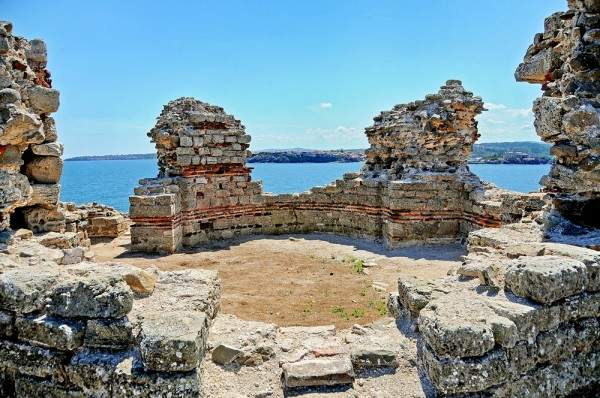Three important ancient finds were discovered in Bulgaria this summer
An amphora from the time of the Trojan war, a tile with the oldest script and Sanctuary of Demeter and Persephone are some of the most interesting archaeological finds in Bulgaria this summer. They are the latest evidence of the importance of the local areas millennia ago.
An amphora from the time of the Trojan War
The archeologists unearthed Buckelkeramik amphora in the Thracian sanctuary Gluhite Kamuni (“Deaf Stones”), nearby the town of Lubimec. The object is fully preserved and is a sample, unseen till now.
“The amphora is extremely valuable representative of Buckelkeramik. The buckels have the shape of a truncated cone, usually sharp like a horn. Obviously, that is not a local variety, but has a rich embossed and lined decoration”, said Prof. Georgi Nekhrizov. The find includes 120 clay figures, which makes it the largest discovery so far.
The area Gluhite Kamuni (“Deaf Stones”) has been an ancient Thracian sanctuary where people have performed rituals for health and fertility around the peak. The place is very still, probably because the stones absorb the sounds.
So far in this sector at the foot of the sanctuary were discovered over 20 ritual outbreaks.
A tile with the oldest script
A 7000 years old clay tile with pictographic signs was discovered near the village of Riben, Dolna Mitropoliya, during archaeological excavations. The ceramic fragment was found in a survey of a Roman roadside station. The experts consider that the find is the oldest evidence found so far worldwide.
There are already found about 100 fragments with signs around the Balkans. They speak about a proto- script, a lot earlier than these in Sumer and Egypt.
A sanctuary of Demeter and Persephone in Sozopol
Such sanctuary is found for the first time in Bulgaria and is only preserved on the Balkans. Furthermore, the archaeologists completely revealed the basilica on the Skamni cape, built upon the sanctuary.
The Hellenes rather had to dig than to build it. Elsewhere they used caves for rituals. Because there are not such in Apollonia, they became to reconciled with the rocks.
Later, in the VI century, the cape was occupied by a fortress wall and a tower, and in the XII Century, a large basilica was built there. The scientists surprisingly discovered a windmill at its center. Upon it, a chapel and apostles were built in the XIX century. The archaeologists hope to find traces of famous in the past The Saints Apostles monastery. It has to be somewhere here. That requires the centuries-old tradition. Regardless of the change of the ethnicities, religions, the place has always been assumed as sacred.



